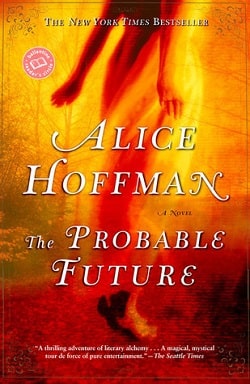Alice Hoffman’s The Probable Future is a mesmerizing exploration of family, legacy, and the burdens of extraordinary gifts. Set against the enchanting backdrop of small-town New England, the novel weaves a tapestry of magical realism and psychological depth, inviting readers to delve into the lives of the Sparrow women, each endowed with unique abilities that shape their destinies and relationships.
The narrative centers around three generations of the Sparrow family: Elinor, the matriarch who can detect falsehood; her daughter Jenny, who has the unsettling ability to see people's dreams; and granddaughter Stella, who possesses a mental window into the future. This trio of women embodies the complexities of familial bonds, as well as the weight of their inherited gifts. Hoffman's prose is both lyrical and poignant, capturing the essence of their struggles and triumphs in a world that often feels both magical and menacing.
At the heart of the story is young Stella, whose clairvoyance becomes a double-edged sword. As she grapples with her ability to foresee events, she is thrust into a moral quandary when one of her visions leads to her father being wrongfully accused of murder. This pivotal moment not only propels the plot forward but also serves as a catalyst for Stella’s character development. Throughout the novel, she evolves from a frightened girl overwhelmed by her gift into a young woman who learns to embrace her power and confront the consequences of her visions.
Hoffman masterfully explores the theme of truth versus deception, a recurring motif that resonates throughout the narrative. Elinor’s gift of detecting falsehood is particularly significant, as it highlights the complexities of honesty within familial relationships. The tension between what is said and what is felt creates a rich emotional landscape, forcing characters to confront their own truths and the lies they tell themselves and others. This theme is further amplified by Jenny’s ability to see dreams, which serves as a metaphor for the hidden desires and fears that lie beneath the surface of everyday life.
The setting of small-town New England is not merely a backdrop but a character in its own right. Hoffman’s vivid descriptions of the landscape, the changing seasons, and the intimate details of the Sparrow family home create an immersive experience for the reader. The historic family home, filled with talismans from the past, symbolizes the weight of history and the legacies that shape the present. It is within these walls that Stella discovers her roots and the secrets of her family, ultimately leading her to confront her fears and embrace her identity.
Hoffman’s character development is particularly noteworthy. Each woman in the Sparrow family is richly drawn, with their own desires, fears, and complexities. Elinor, with her stoic demeanor, embodies the strength and resilience of matriarchs, while Jenny’s vulnerability and longing for connection highlight the emotional toll of their gifts. Stella’s journey is the most compelling, as she navigates the treacherous waters of adolescence intertwined with the burden of her clairvoyance. The relationships between the women are fraught with tension, love, and understanding, creating a dynamic that feels both authentic and relatable.
The novel also delves into the theme of fate versus free will, as Stella grapples with the implications of her visions. Can she change the future she sees, or is she merely a spectator in her own life? This philosophical question adds depth to the narrative, inviting readers to ponder the nature of destiny and the choices we make. Hoffman skillfully balances the fantastical elements of the story with the harsh realities of life, creating a narrative that is both enchanting and thought-provoking.
In comparison to other works of magical realism, such as Isabel Allende’s The House of the Spirits or Sarah Addison Allen’s Garden Spells, The Probable Future stands out for its intricate character development and emotional depth. While Allende’s novel explores the intersection of personal and political histories, and Allen’s work focuses on the charm of small-town life, Hoffman’s narrative is deeply introspective, examining the internal struggles of its characters as they navigate their extraordinary gifts.
Overall, The Probable Future is a beautifully crafted novel that resonates on multiple levels. Hoffman’s ability to blend the magical with the mundane creates a rich tapestry of human experience, inviting readers to reflect on their own lives and the legacies they carry. The themes of truth, family, and the complexities of fate are woven seamlessly into the narrative, making it a compelling read that lingers long after the final page is turned.
In conclusion, Alice Hoffman’s The Probable Future is a powerful exploration of the ties that bind us, the gifts that challenge us, and the futures we must confront. It is a testament to the strength of women, the weight of family history, and the courage it takes to embrace one’s true self. This novel is a must-read for anyone who appreciates rich storytelling, complex characters, and the magic that exists in the everyday.








![Marriage Substitute [Official]](/upload/pic/manga/marriage-substitute--official-.jpg)















Reviews 0
Post a Reviews: